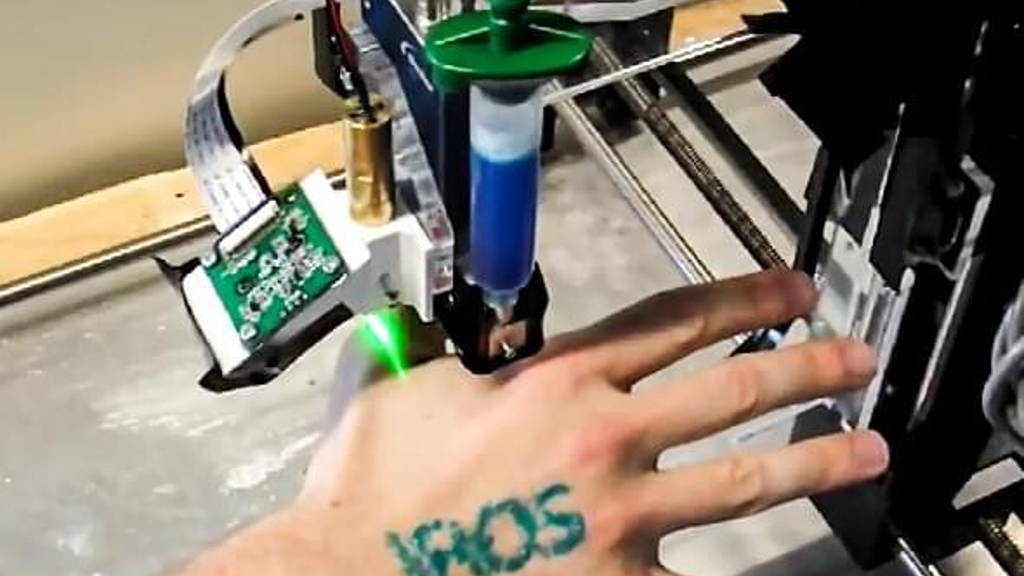The system is intended to put down layers of biomaterials. More and more of these materials have been developed in the recent years, but they have been limited in their applications due to having to be made on a printer and then somehow transferred to the skin. The University of Minnesota team has developed a printer that solves this problem by printing directly onto a surface such as human skin.
###3Dprinter###
In this video The UoM system continuously tracks the hand while it’s under the printer, and adjusts the position of the nozzle to guarantee a correct position of every drop of bio-ink, MedGadget writes . 3D-bioprinting creates a lot of new possibilities in this world. 3D-printing skin and even organs will cut costs, improve healing and reduce the mortality rate. Researchers have already succeeded in creating tissue from human cells with 3D-printers in the last few years. This shows that there is a real possibility to 3D-print organs in the future. Human cells however, don’t have printer-friendly material qualities. To solve this problem, researchers have to use bio-ink. Bio-ink is a substance, which can be mixed with human cells. This makes them printable.
‘We developed a control scheme for precision material deposition via piezo microjetting while tracking in real-time to continuously sense anatomy location and deposits material in a predefined trajectory derived from two pre-selected target geometries,’ the paper authors write. ‘We show that multilayer 3D structures can be created on a moving human hand with 1.6 mm average error and 87.8% overall accuracy.’
In this video The UoM system continuously tracks the hand while it’s under the printer, and adjusts the position of the nozzle to guarantee a correct position of every drop of bio-ink, MedGadget writes . 3D-bioprinting creates a lot of new possibilities in this world. 3D-printing skin and even organs will cut costs, improve healing and reduce the mortality rate. Researchers have already succeeded in creating tissue from human cells with 3D-printers in the last few years. This shows that there is a real possibility to 3D-print organs in the future. Human cells however, don’t have printer-friendly material qualities. To solve this problem, researchers have to use bio-ink. Bio-ink is a substance, which can be mixed with human cells. This makes them printable.
Feasibility of robotically 3D printing biomaterials
In their paper concerning the development of the new 3D-system, the research team from the UoM establishes the feasibility of robotically 3D printing biomaterials such as alginate hydrogels onto moving human anatomy and a stationary plane. The alginate hydrogels used are in-vivo compatible and a proven biomaterial for tissue scaffolds.‘We developed a control scheme for precision material deposition via piezo microjetting while tracking in real-time to continuously sense anatomy location and deposits material in a predefined trajectory derived from two pre-selected target geometries,’ the paper authors write. ‘We show that multilayer 3D structures can be created on a moving human hand with 1.6 mm average error and 87.8% overall accuracy.’






